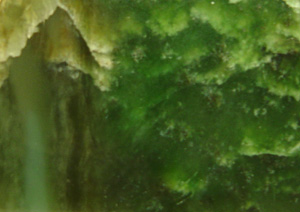Bowenite

Bowenite is a hard, compact variety of the serpentinite species antigorite, (Mg3(OH)O4Si2O5)[1]. Classed as semi-precious gem stone[2] it has been used fortools, weapons and jewellery by the Māori in New Zealand, and for jewellery by Fabergé[3]. Deposits are found in several places around the world including Afghanistan, China, New Zealand, South Africa and the United States. It typically ranges in colour from a dark to green, and in shades approaching yellow. Bowenite was named by James D. Dana in 1850 after George T. Bowen, who analyzed it in 1822.
Together with nephrite jade the Māori class bowenite as pounamu along with nephrite jade, which is particular significance to the Ngai Tahu iwi on whose traditional lands on the South Island most depoists are found[4]. These deposits are legally protected, and taking material without Ngai Tahu permission has led to prosecutions[5]. Historically it was used tools, weapons and ornaments, although modern use is limited to jewellery such as Tiki[6][7][8].
It is the the state mineral of the US state of Rhode Island[9].
Most deposits of bowenite are small, although a large deposit was discovered in South Africa in 1989. The largest known artifact made of bowenite is a carving approximately 35 cm in size, which resides in the National Museum of China. Deposits in China are in the Soochow region, which accounts for its also being known as Soochow jade. [citation needed]
